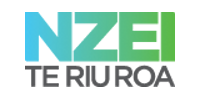September 26, 2006
NZEI Launches Guidelines On Physical Contact
NZEI Te Riu Roa is today (Tuesday September 26) launching new guidelines on physical contact with students, to assist its members who work as teachers and support staff in schools and early childhood education centres.
The ‘Guidelines: Physical Contact With Children’ cover 45,000 NZEI members who educate around 860,000 children aged two to 20.
The guidelines recognise that teachers and support staff will come into physical contact with children and students during their work and state “this is acceptable when carried out in a professional and responsible manner that is age appropriate.”
They advise NZEI members “to use common sense in all areas of their interaction with children and be mindful of situations that may expose themselves to unnecessary risk.”
“These new one page guidelines have been developed after extensive discussions among teachers and support staff,” says NZEI Te Riu Roa National President, Irene Cooper.
“They offer clear and concise advice designed to assist our members in making their schools and early childhood education centres positive and caring learning environments, where children, students and the staff feel safe,” says Irene Cooper.
The new guidelines replace NZEI’s code of practice on physical contact, which was issued in 1998.
“We have updated the advice on physical contact to reflect the social environment in which schools and early childhood education services are operating today,” says Irene Cooper.
NZEI acknowledges that the previous code was more cautious in its advice. That’s because the code was developed in the 1990s, when there was a higher level of anxiety in the community about physical contact between adults and young people.
“Thankfully most of the community have learnt some lessons from what happened at that time,” says Irene Cooper.
“But NZEI knows from experience that teachers and support staff still need to be aware that physical contact with children and students can be misconstrued.”
“That’s why the guidelines advise them to be mindful of situations that may expose them to unnecessary risk and to work together to develop policies and practices that minimize that risk,” says Irene Cooper.
The approach the guidelines recommend is summed up in the final paragraph: “Building a positive and caring learning environment will involve some physical contact with children. NZEI encourages all schools and centres to discuss situations where physical contact might occur, and to develop procedures and guidelines outlining acceptable boundaries for differing circumstances.”
NZEI’s ‘Guidelines: Physical Contact With Children’ are being launched at the union’s Annual Meeting at 11.50am Tuesday September 26 in the Wellington Town Hall.
ENDS




 University of Auckland: Tributes Flow For Much Loved Pacific Leader Melegalenu’u Ah Sam
University of Auckland: Tributes Flow For Much Loved Pacific Leader Melegalenu’u Ah Sam NZEI: Ministry Of Education Cuts Will Disproportionately Affect Pasifika
NZEI: Ministry Of Education Cuts Will Disproportionately Affect Pasifika Day One Hapai te Haeata: Call To Action For Young Filmmakers Against The Backdrop Of Funding Cuts
Day One Hapai te Haeata: Call To Action For Young Filmmakers Against The Backdrop Of Funding Cuts Toyota New Zealand: Three Races For Top Three To Decide TR86 Title
Toyota New Zealand: Three Races For Top Three To Decide TR86 Title Wellington City Council: Wellington Is All Action Stations For The Faultline Ultra Festival
Wellington City Council: Wellington Is All Action Stations For The Faultline Ultra Festival Melanie Allison: Local Playwright Casts A Spell Over Hamilton
Melanie Allison: Local Playwright Casts A Spell Over Hamilton